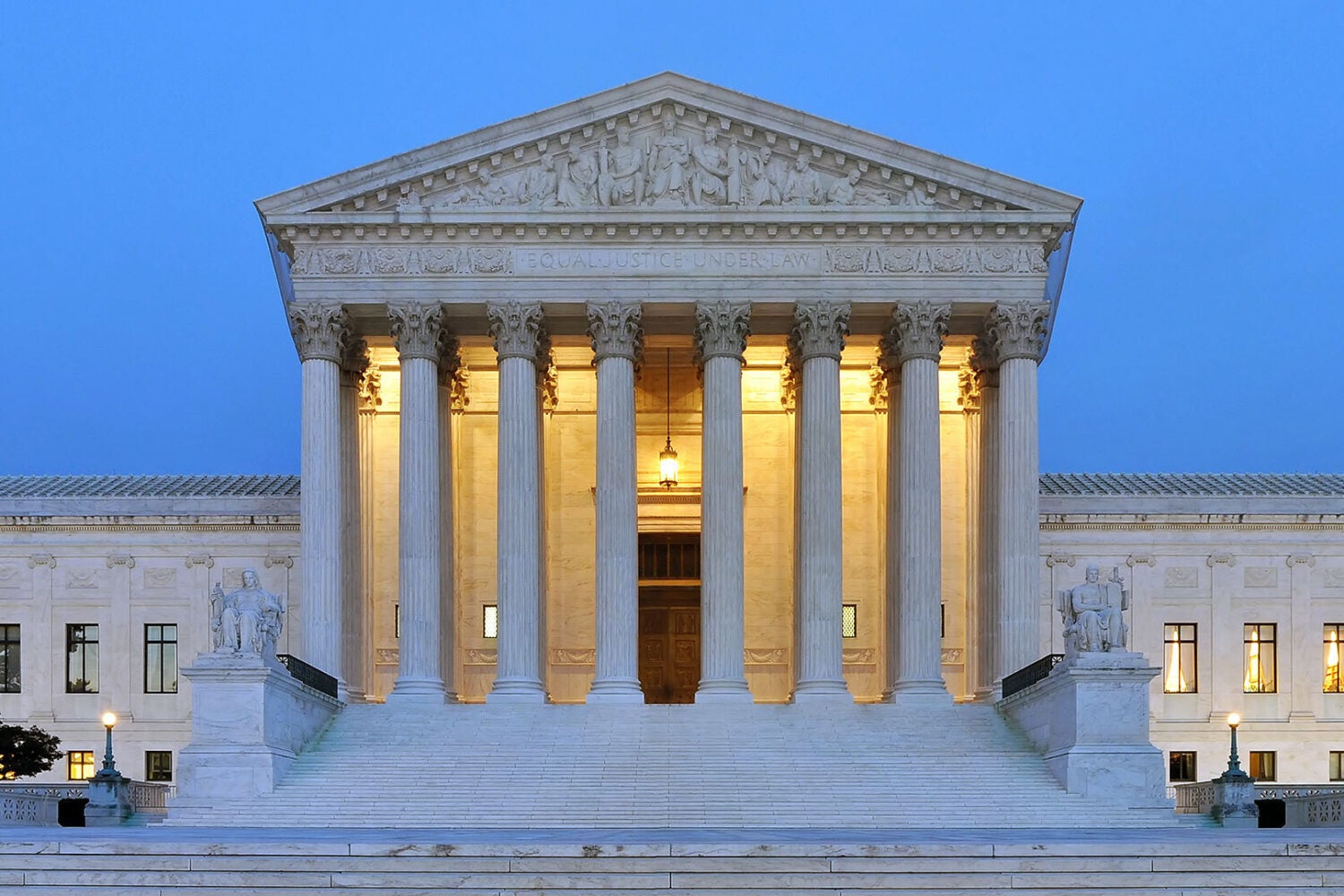On October 11, the U.S. Supreme Court will hear arguments in a voting rights case – Alexander v. South Carolina Conference of the NAACP – that will decide whether the Republican-controlled South Carolina legislature deliberately considered race when drawing new congressional district maps after the 2020 census. In January, a three-judge panel sided with the plaintiffs, ruling that legislators had purposefully moved thousands of Black voters out of the First Congressional District, which includes parts of the Charleston metro area. In their defense, the state argues that the new electoral lines were drawn purely to make the district more secure for Republicans, which the Court has previously ruled is a permissible form of gerrymandering under the U.S. Constitution. The district has been represented by Republicans for all but two years since 1981. Democrat Joe Cunningham flipped the district in November 2018, but lost his reelection bid to Nancy Mace in 2020 by a margin of 49.3% to 50.6%. Mace was reelected in 2022 with 56.4% of the votes.
According to Harvard Law School Professor Nicholas Stephanopoulos, the racial gerrymandering claim brought under the U.S. Constitution’s Equal Protection Clause will hinge on the plaintiffs’ ability to prove the intent of the legislators who drew the maps. Stephanopoulos, an election law expert, co-wrote with University of Michigan Assistant Professor Jowei Chen an amicus – or friend of the court –brief noting that this is one of the first cases of its kind in which computer models were used in the litigation and arguing that they can be helpful in establishing the line-drawers’ purpose.

Harvard Law Today: Can you share a little background about the case? What are the two sides arguing?
Nicholas Stephanopoulos: The plaintiffs’ argument is that when South Carolina designed the First Congressional District, race predominated in the design of that district, and there was no good reason why race had to predominate in that district’s design. Under a doctrine called racial gerrymandering that the Court created 30 years ago, that is an unlawful violation of the Constitution’s Equal Protection Clause. South Carolina is arguing that the true motivation was partisan gain, not anything racial. And the Court has said that drawing districts to achieve partisan advantage is permitted. The Court will need to assess the South Carolina legislature’s motivation for why it designed District One. Was it deliberately minimizing the Black population? Or was it creating a Republican district there to benefit Republicans?
A few things make the South Carolina case a little bit more interesting than other racial gerrymandering claims. One is that this is the first case to go to the Court where we’re dealing with a district with quite a low minority population, and where the claim is that race predominated in that the racial makeup of that district was artificially suppressed, not artificially enhanced. The typical claim of this kind would be against a strange looking, heavily minority district, arguing that race predominated in its creation, which explains why the district is so heavily minority. Here, the claim is that race predominated, which explains why the district is not minority enough – that it is artificially white compared to what it otherwise would have been. The other notable thing is that this is the first case in front of the Supreme Court of this kind using computer simulations to try to tell us what would have happened if race hadn’t predominated. The plaintiffs had a couple of different experts program computers to ignore race but try to accomplish all of South Carolina’s other goals, and then see how the racial makeup of the simulated district compared to the current one. Those analyses showed that you almost always got a more heavily Black district in the simulations. This analysis supports the inference that race predominated in in designing district one.
HLT: To what degree does motivation versus effect make a difference?
Stephanopoulos: These kinds of constitutional racial gerrymandering claims hinge on an intent or purpose. The operative legal standard is whether race was the predominant motive that accounts for the creation of a given district. This is quite different from the Voting Rights Act context, where plaintiffs can win a claim based on disparate impact alone. Here, disparate impact can be useful probative evidence of intent. But that’s all it is. The whole ballgame is showing that it was race and not something else that was a predominant intent for creating a given district.
HLT: Intent seems hard to prove. What do the plaintiffs need to show?
Stephanopoulos: Yes, it is hard. This legal theory, unlike some other ones, focuses on colorblindness. The purpose that has to be demonstrated is a color conscious purpose. Whether it’s a supposedly benign or an invidious purpose doesn’t matter for this claim. It just has to be a race inflected motive. The plaintiffs’ burden is to come up with whatever evidence, circumstantial or direct, they can find that supports the inference of a predominant racial purpose. Sometimes, this can be the bizarre shape of the district. Why would the district look like this if not because of racial intent? Even more powerful can be analysis of district boundaries relative to the spatial patterns of different racial groups. You can often figure out what the intent must have been from how the boundary either includes or excludes certain groups of people. Then, sometimes there are statements that are also probative of intent. And the computer simulations are also helpful because they let you illuminate the counterfactual of what would have happened if race wasn’t a factor at all. And then you can compare that counterfactual to reality to determine how different reality is from the counterfactual. That gives you more insight into whether race was likely a factor or not.
HLT: Do plaintiffs need to find email or text message threads in which the legislators drawing the maps admitted privately to a racial motive?
Stephanopoulos: You don’t have to, but it helps. There are cases where they had smoking gun statements and those are easy wins for plaintiffs. There is nothing like that here. The legislators drawing the map didn’t themselves announce an explicit numerical target. But the lower court thought that they had effectively used one through some of the evidence and data they used when redistricting.
HLT: Does the Supreme Court’s surprise decision earlier this year in Allen v. Milligan, in which five justices agreed that Alabama’s new congressional map likely violates the Voting Rights Act, provide any insight into how they might approach this case?
Stephanopoulos: Not much, I think, because of how different the claims are. Claims under Section Two of the Voting Rights Act, which was at the heart of Milligan, are swords that minority voters can use to explicitly win more representation for minority voters. A conservative Court is much more ideologically hostile to that kind of claim than to a claim that race improperly predominated and therefore violated the ideal of colorblindness that this Court believes in. This Court finds racial gerrymandering claims much more ideologically congenial than Section Two Voting Rights Act claims. So, I don’t think that the surprise ruling in Milligan tells us much about what’s going to happen here. Maybe a parallel is the deference in Milligan to a lower court that did a good job factfinding and didn’t seem to have an ideological agenda and just seemed to be applying the law as it stands. That’s what the lower court was doing in Milligan and I think one could say that the lower court here was also fairly applying existing racial gerrymandering precedent. More to the point, Milligan was a blockbuster case because Alabama was threatening the basic pillars of the Voting Rights Act and how it’s worked for the last 40 years. I don’t think the South Carolina case is a blockbuster case. If the plaintiffs win, it just affirms a lower court judgment, which is pretty fact specific and contextual. If the plaintiffs lose, it doesn’t have any sweeping effect. South Carolina isn’t challenging the logic of this legal claim. So, I don’t think it’s going to cause any huge changes in racial gerrymandering law either way.
HLT: You mentioned this is the first case like this that involves the use of computer simulations. You also submitted an amicus brief on this point. What were you trying to bring to the Court’s attention?
Stephanopoulos: In the amicus brief that I wrote with Jowei Chen in this case, we didn’t take a strong stance on the merits. We just said, “Court, you should be aware that this is the first case you’ve seen of this kind where computer simulations of redistricting were used.” We had a couple of goals. One was to explain how this method is useful in this context. Two was to educate the Court about how this technique has been used in earlier racial gerrymandering cases. And three, we wanted to argue that the Court was right to be skeptical of computational redistricting in the context of Milligan, which it was, but that doesn’t mean that the Court should be equally skeptical here. The big difference between the two is that, in this context, the issue is intent, and the computer simulations are pretty good at shedding light on intent. But in the Voting Rights Act context, the issue is effect. And there already is a baseline for determining the effect, so there was really no function for computer simulations to serve there.
This conversation was edited for length and clarity.
Want to stay up to date with Harvard Law Today? Sign up for our weekly newsletter.
